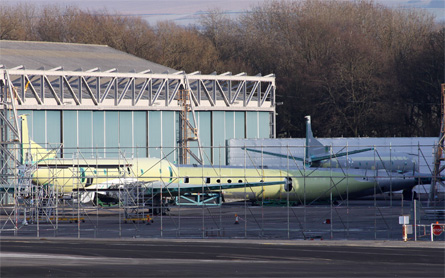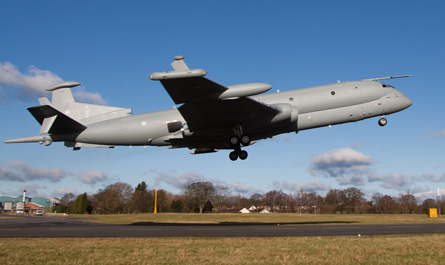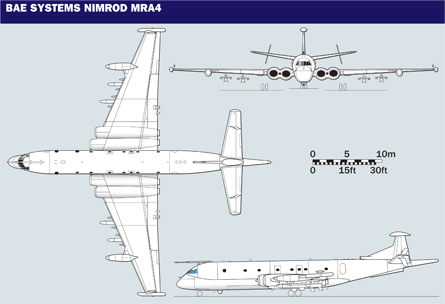With work to scrap the UK's BAE Systems Nimrod MRA4 maritime patrol aircraft having started at the company's Woodford site in Cheshire earlier this week, widespread criticism of the decision has mounted.
BBC footage aired on 25 January which showed sections of at least three airframes being destroyed using an excavator highlighted the coalition government's stark decision to cancel the MRA4 programme, despite past investment worth more than £4 billion ($6.38 billion). A BAE representative of the Unite union at Woodford described the procedure as an act of "barbaric vandalism".
 |
|---|
Plans for the MRA4 - previously referred to as the Nimrod 2000 - had changed dramatically over the programme's almost 15-year life since its selection in 1996, following a competition with a so-called Valkyrie development of the Lockheed Martin P-3 Orion.
Contracted as a fixed-price development and production deal for 21 aircraft, the programme was progressively trimmed to 18, 12 and then nine aircraft over the following years as delays mounted and costs spiralled.
BAE's first MRA4, named PA1, performed its long-delayed debut flight from Woodford in August 2004, and was the first of three development aircraft to have taken part in a test phase which totalled roughly 1,900 flight hours.
 |
|---|
© BAE Systems |
The Royal Air Force's first of a planned nine production MRA4s, PA4 (above), made its flight debut in September 2009, and began supporting training activities last March. Registered as ZJ514, the aircraft is still at BAE's Warton site in Lancashire, where it will be scrapped.
Only one additional production airframe reached flight status as part of the programme, with PA5 having first taken to the sky in March 2010. All the remaining aircraft had been in work at Woodford prior to the programme's cancellation as part of the UK's Strategic Defence and Security Review, including development aircraft PA3, which was being converted for use as an operational asset.
Owned by the Ministry of Defence, the airframes have been stripped of valuable equipment such as their Rolls-Royce BR710 turbofan engines and any installed avionics before being destroyed.
 |
|---|
The MRA4 programme's cancellation has proved controversial, due to the Nimrod's past value in protecting the UK's sea lanes, providing a long-range search and rescue capability and supporting its Trident missile-equipped submarines. Its demise has also placed the future of its planned main operating base at RAF Kinloss in Scotland in doubt, with a decision expected on the service's future basing requirements later this year.
Plans to field the new MRA4 fleet at Kinloss had already been finalised, with its Thales-provided simulator building already in place and the first RAF personnel having begun training in August 2010 with its 42(R) Sqn operational conversion unit. However, doubts emerged after the MoD opted to approve the early retirement of its previous Nimrod MR2s by March 2010, although the new type was not due to achieve initial operational capability before October 2012. The entire fleet should have been in use by the following year.
In the absence of a dedicated maritime patrol aircraft, the UK is now reliant on the use of RAF Lockheed Martin C-130J tactical transports and Royal Navy AgustaWestland AW101 Merlin HM1 anti-submarine warfare helicopters to provide more limited cover.
Source: Flight International



















